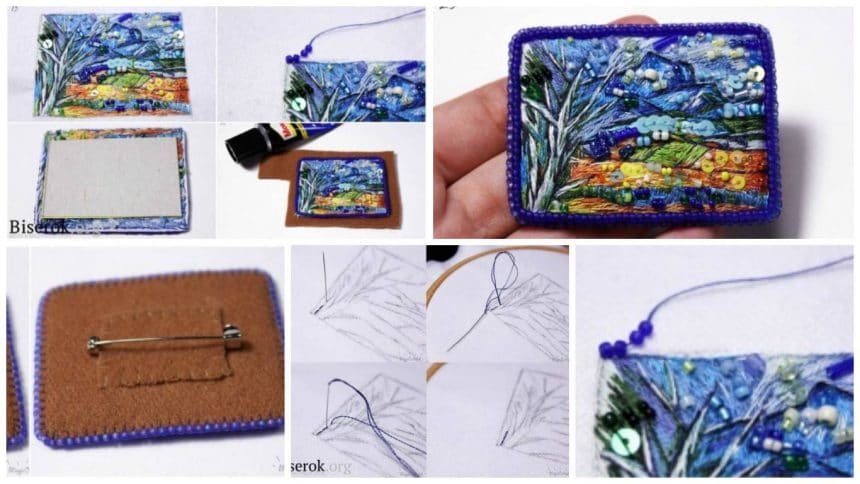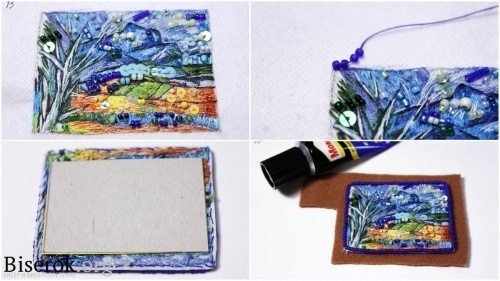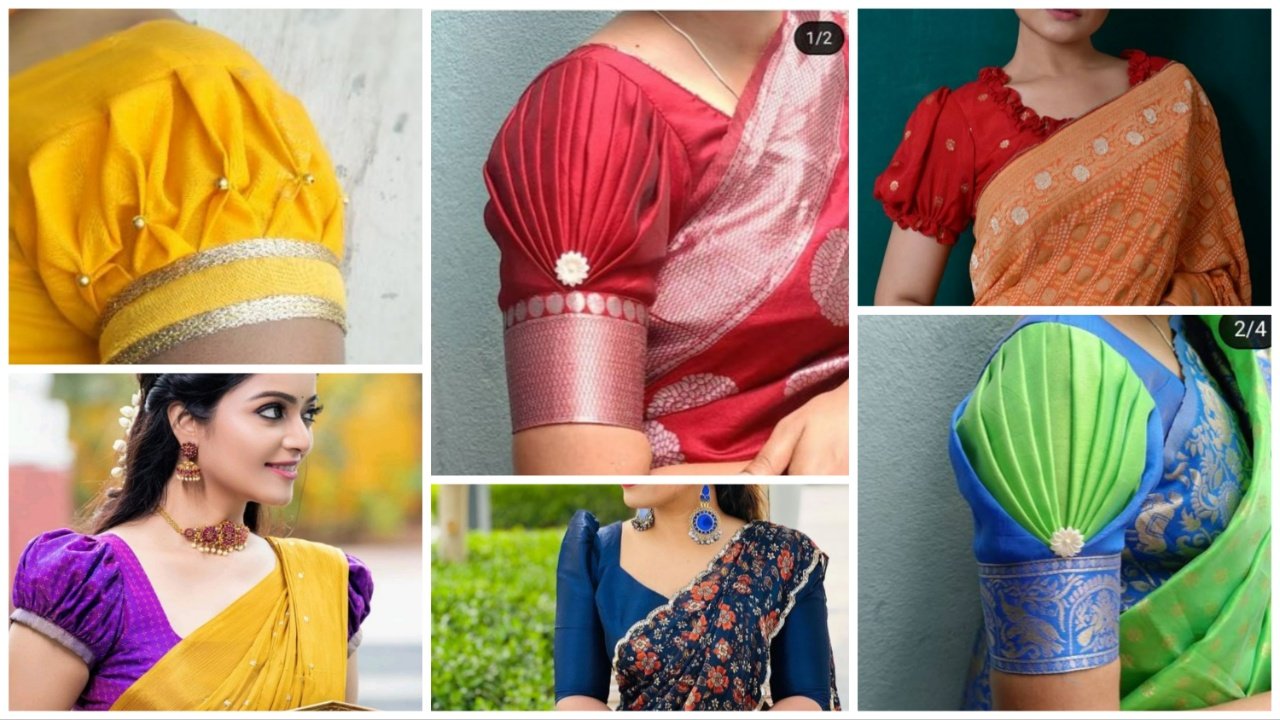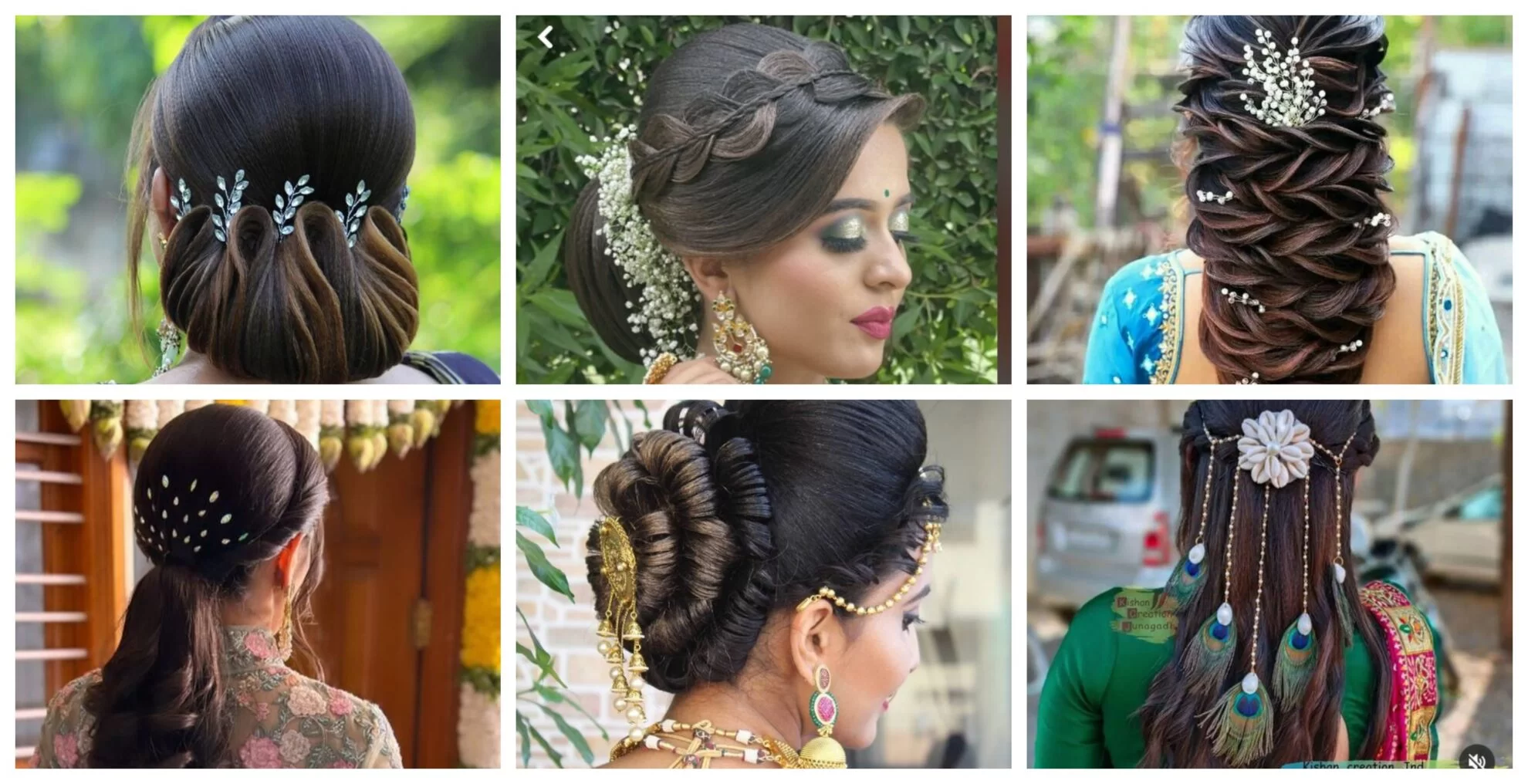long enough chose a suitable for the master class work. I wanted to find something uncomplicated in the construction (in order not to scare away those who are far from drawing as such), but at the same time not boring in the color decision. Therefore, my choice fell on the work of the famous representative of Post-Impressionism Paul Cezanne. The randomness and contrast of curving lines of different colors is what we need!
Materials that are very useful:
Pencil and sketch paper;
Embroidery frame;
Bead needle;
scissors;
Mulina (in my work I used the threads of the firm “Gamma”);
Beads and sequins of necessary colors;
Glued fleece (you can use any convenient fabric + tracing paper, for more details see MK);
Woolen flannel or felt (material of the wrong side);
Glue “Moment-gel”;
A small piece of cardboard;
Metal clasp for a brooch.






















